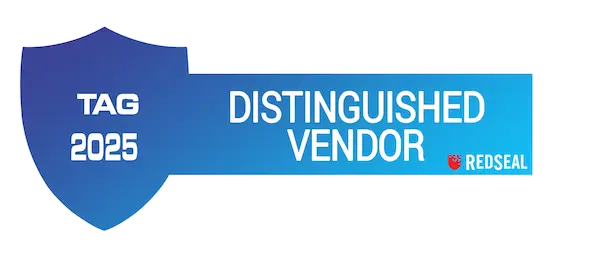Tales from the Trenches: Vol 8 — Is that what you are going to say to the Auditor?
Since 2004, RedSeal has helped our customers See and Secure their entire complex network. And while those customers may have understood the value of understanding their environment, how it was connected and see what’s at risk, there is often an “Aha” moment when the true significance is clear. The stories of these moments are lore within the walls of RedSeal. But these tales so clearly illustrate the value of RedSeal beyond just theory that we think they’re worth sharing. In the words of our team in the field, the ones working directly with our customers, this blog series will share the moments where it all gets real.
In this edition of the series Brad Schwab, Senior Security Solutions Consultant addresses a tricky network scanning question and how to verify with RedSeal.
Is that what you are going to say to the Auditor?
One of the biggest elephant in the room questions for Security Operations groups that deal with Vulnerability Scanners is very simple to state, but very, very tricky to answer, “are you sure you are scanning the entire network?” Sounds like it should be a simple yes or no answer. However, with any network of scale, the answer can be almost impossible to verify.
I was in a high level meeting for a large Health Organization with the CTO, head of Network Operations (NetOps), the head of Security Operations (SecOps), along with other people that had different stakes in the performance and security of the network. Since the network was the main instrument supporting the “Money Engine” of the operation, all attendees were laser focused on answers to any questions.
At a certain point in the meeting Wendy, the head of SecOps was talking about the scanning program. More specifically, she was speaking about procedures created to scan the entire network. The entire network!? So, at this point, I had to ask the question, “how do you know you are scanning the entire network?” She pointed to Bill, the head of NetOps and said “Bill said I could…”. That is where I looked at Bill, and said “is that what you are going to put on the audit, “Bill said I could?” Now, Bill and I had a good working relationship, and he knew that I was having a bit of fun at his expense, however, others in the room weren’t going to gloss over the subject, and began to pepper both Bill and I with questions. I proceeded to line out where the difficulties were in answering, with the following questions:
- Does the scanner have a complete list of all IP space on the network that needs scanned?
- Are there any overlapping subnets? If so, that overlapped portion of a subnet is not visible to the scanner. Thus, creating a possible hiding place for a bad actor.
- Is there any duplicate IP space in the network? – again creating blind spots to any scanner.
- And finally, the hard part, does the scanner have logical access to the entire network? Even if the scanner is trying to scan a network subnet, if the network architecture via Access Control Lists and Routing is blocking the access or not granting the access, then the scan won’t be complete. On top of that, you will get no indication from the scanner that the scan didn’t work. Beyond the logical access issue, no one had thought of the other issues. I then explained how RedSeal automatically looks for subnets that have no scan data, thus possibly not part of the IP list giving to the scanner, overlapping subnets and duplicate IP space. At the same time, I explained how a RedSeal Access Query combined with our “show what is missing” feature can give you a list of everything that the scanner can’t reach because of network architecture.
I ended my explanation with “with these features, you can have comprehensive documentation of complete scanner coverage for your upcoming audit(s)…”
After less than a few days of work, we had provided a list to both NetOps and SecOps of additions and changes required by both teams to make their Vulnerability Program complete.
Interested in how RedSeal can help your team? Click here to set up a demo or an introductory call.




